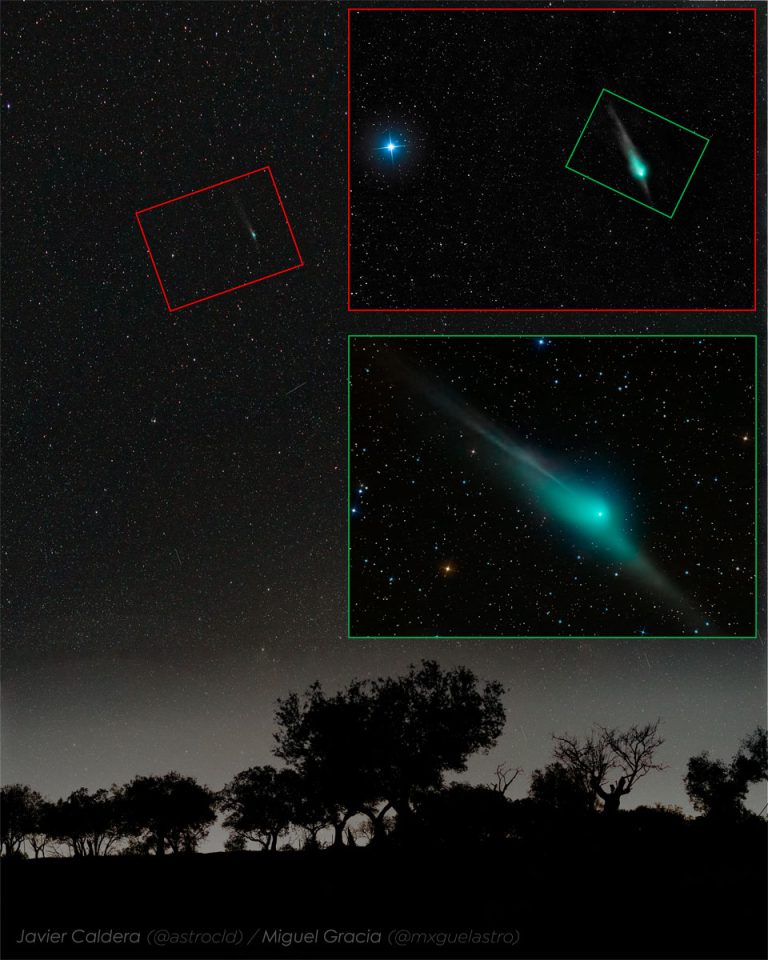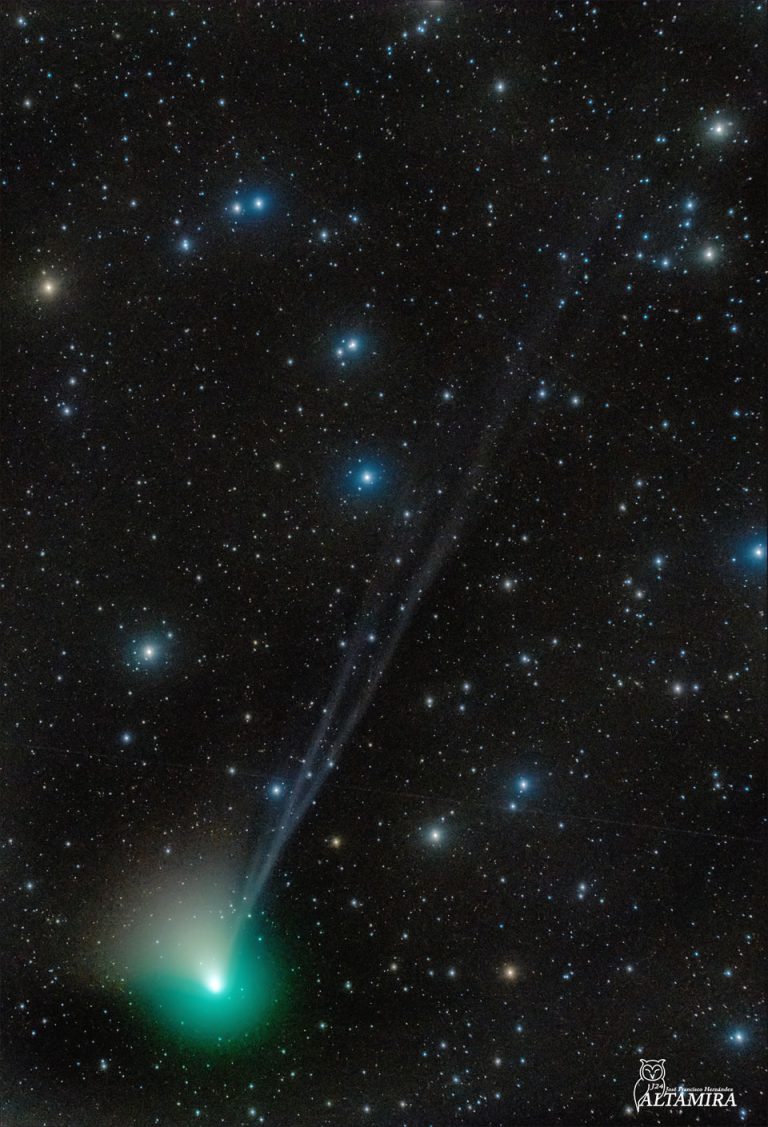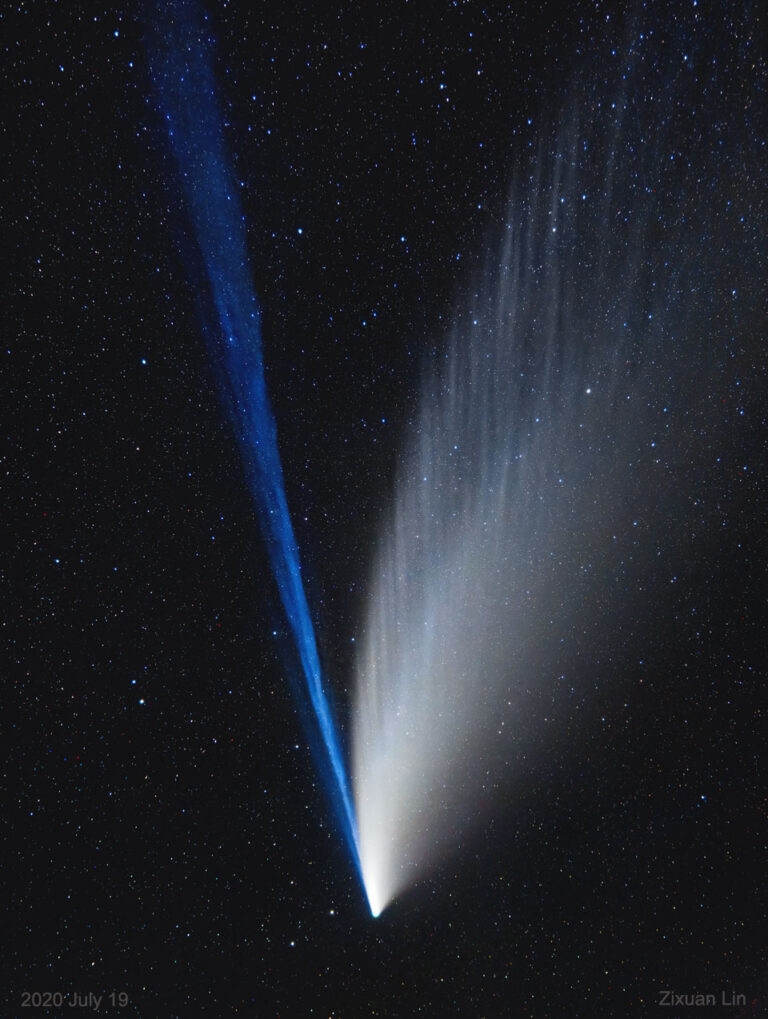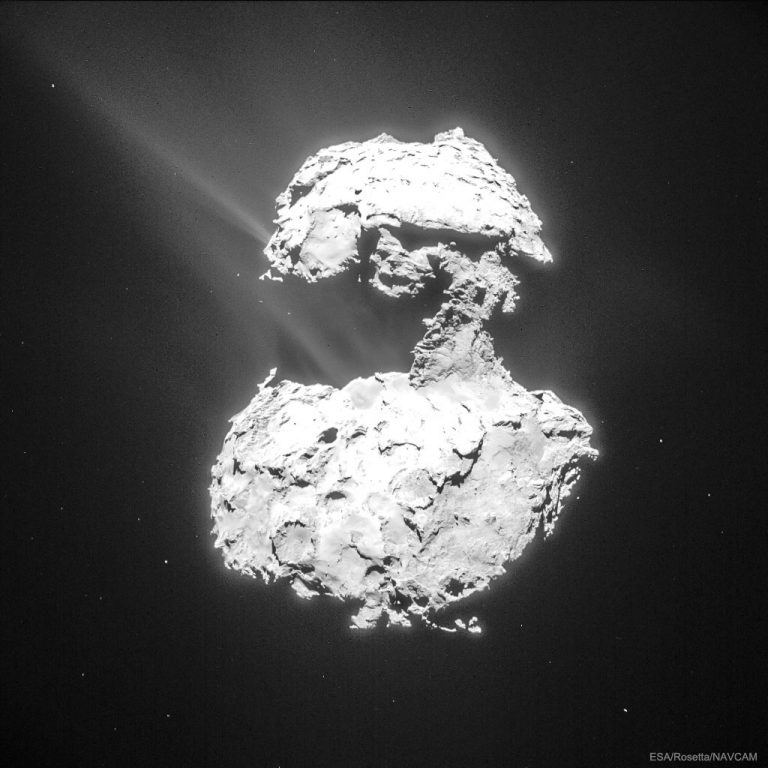ZTF彗星的三重景观
2023年1月31日 A Triple View of Comet ZTF Image Credit & Copyright: Javier Caldera & Miguel Gracia Explanation: Comet ZTF has a distinctive shape. The now bright comet visiting the inner Solar System has been showing not only a common dust tail, ion tail, and green gas coma, but also an uncommonly distinctive antitail. The antitail does not actually lead the comet — it is just that the head of the comet is seen superposed on part of the fanned-out and trailing dust tail. The giant dirty snowball that is Comet C/2022 E3 (ZTF) has now passed its closest to the Sun and tomorrow will pass its closest to the Earth. The main panel of the featured triple image shows how Comet ZTF looked last week…







